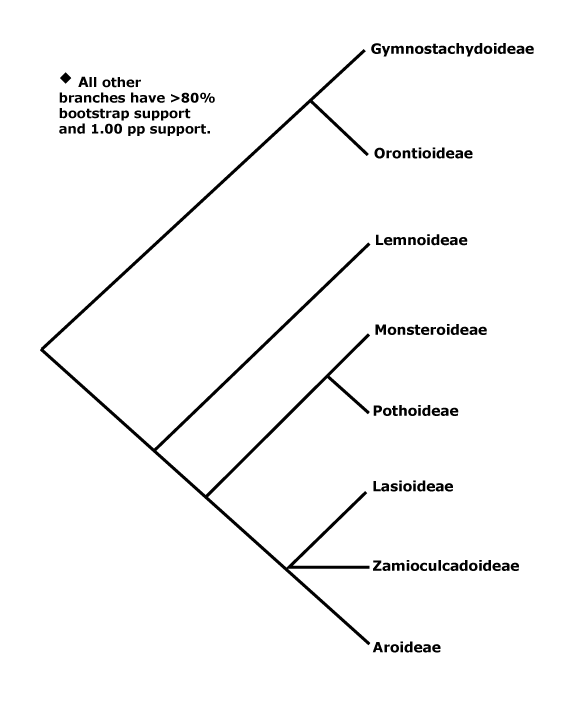Now that winter is on our doorstep, some of us like to think of warmer places. Wouldn’t it be nice to spend December in a tropical country? I like to imagine what a traditional Christmas meal could be in a warmer place… If we were to be in the other side of the Atlantic, between Mexico and Brazil, we could definitely have some tubers of Xanthosoma violaceum at our table!
First, let’s get the name right!
Xanthosoma violaceum Schott is a plant name which was published in 1853 by Heinrich Wilhelm Schott. However, according to the latest classification , this name is now a synonym of Xanthosoma sagittifolium (L.) Schott. From now on, I will call this plant Xanthosoma sagittifolium (L.) Schott. So, perhaps we can agree on a scientific name, but I don’t think that would be possible concerning the common names for this species!
Xanthosoma sagittifolium has more than 20 different common names in four different languages! Some of its common names are in the table here.
Classification

Drawing of Xanthosoma sagittifolium, by Sir William Jackson Hooker (1785 – 1865) [Public domain], via Wikimedia Commons
The Araceae now includes the duckweed subfamily, Lemnoideae. The family Lemnaceae was sunk into the Araceae family in the latest APG III classification. All species of this subfamily are herbs and are exclusive to fresh water systems.

Detail of Xanthosoma sagittifolium inflorescence, growing at Reading University tropical glasshouse. [Credits: Barrios, S. 2013]
Xanthosoma sagittifolium is a perennial herb that can reach 1 to 2 m tall. It has milky sap and, at the base of the stem, one can find tubers, which are edible. The leaves can grow up to 60 cm long and are, generally, oblong-ovate holding on a horizontal position. The leaves are deeply sagittate (hence the specific epithet ‘sagittifolium’) with subacute lobes at the base. The spathe is about 15 to 25 cm long. The spadix is 15 cm longer; it has a basal region where the female flowers are, with 3–4 cm long; the middle region is sterile and the upper region, with male flower is about 6 to 8 cm long, without a sterile tip.
Species distribution
Xanthosoma sagittifolium grows naturally in moist tropical forest in Central and South Tropical America. However, due to its edible tubers, it has been introduced to other countries from North America (Mexico), Central America (Honduras and Nicaragua), Caribbean (Cayman Islands, Cuba, Dominican Republic, Haiti, Jamaica, Leeward Islands, Puerto Rico, Venezuelan Antilles, Windward Islands) and to countries in West Africa, such as Guinea-Bissau and Gabon (Kew The Board of Trustees of the Royal Botanic Gardens, 2010).

Tubers of Xanthosoma sagittifolium
Credits: ©Cantiq Unique via Flickr]
Uses
This species joins the other members of the aroid family which are edible. Together with Colocasia esculenta, these two species have enormous nutritious value. The swollen tubers of Xanthosoma sagittifolium are starchy like potatoes, and are a source of energy for the local populations. The leaves are also eaten, cooked in a very similar way to spinach.
Further Reading
Food and Agricultural Organisation of the United Nations
The United States Department of Agriculture
Bibliography
Acevedo-Rodriguez, P. S. M. T. (2005). Monocots and Gymnosperms of Puerto Rico and Virgin Islands. Contributions from the United States National Herbarium. Contributions from the United States National Herbarium.
An update of the Angiosperm Phylogeny Group classification for the orders and families of flowering plants: APG III. (2009). Botanical Journal of the Linnean Society, 161(2), 105–121.
Beentje, H. J. (2010). The Kew plant glossary: an illustrated dictionary of plant terms.
Heywood, V., Brummitt, R. K., Culham, A., & Seberg, O. (2011). Flowering plants: a concise pictorial guide. Kew Publishing.
Kew The Board of Trustees of the Royal Botanic Gardens. (2010). World Checklist of Selected Plant Families.
Pérez, E., de Delahaye, E. P., & Schultz, F. S. (2005). Characterization of some properties of starches isolated from Xanthosoma sagittifolium (tannia) and Colocassia esculenta (taro). Carbohydrate Polymers.


